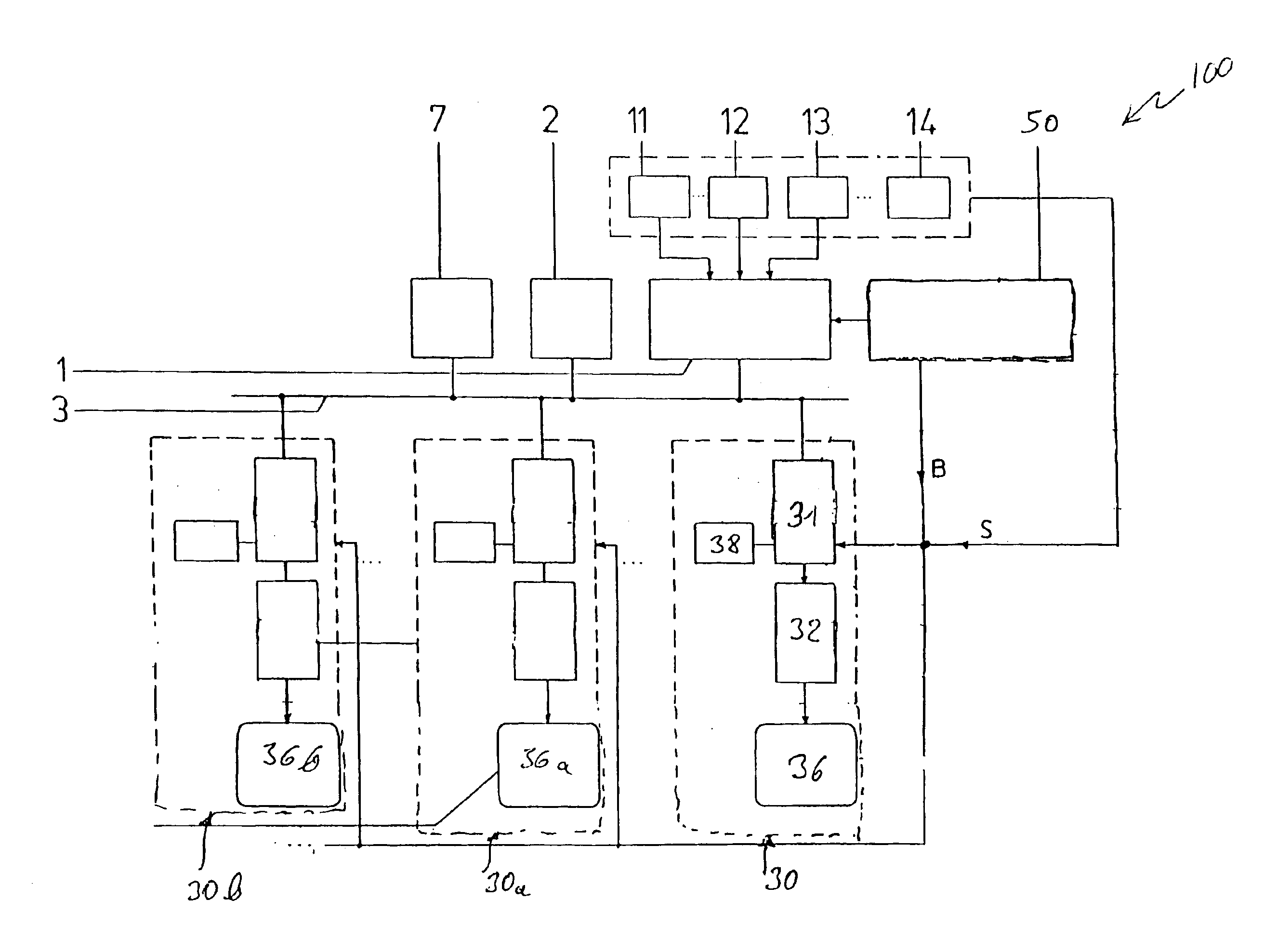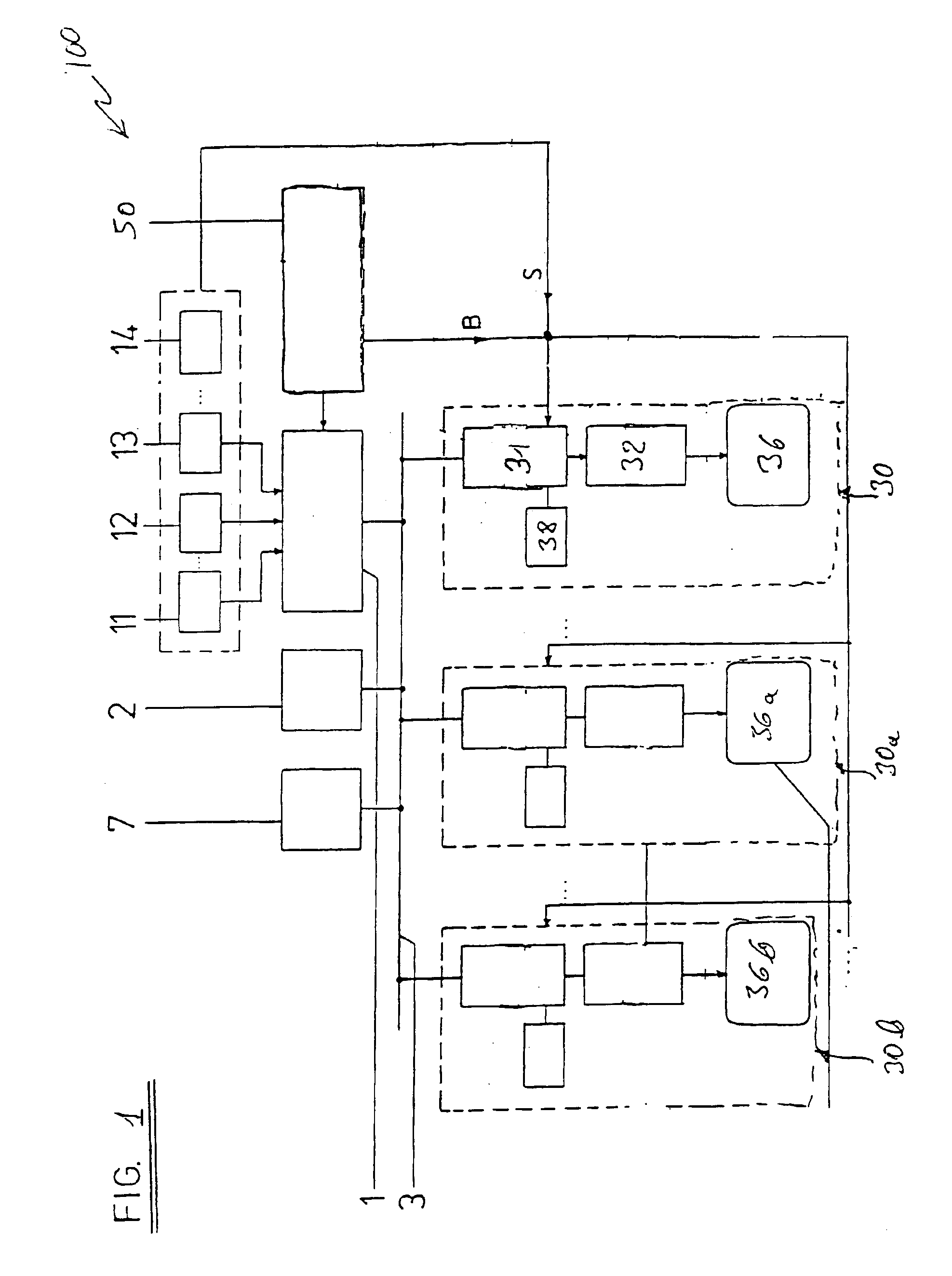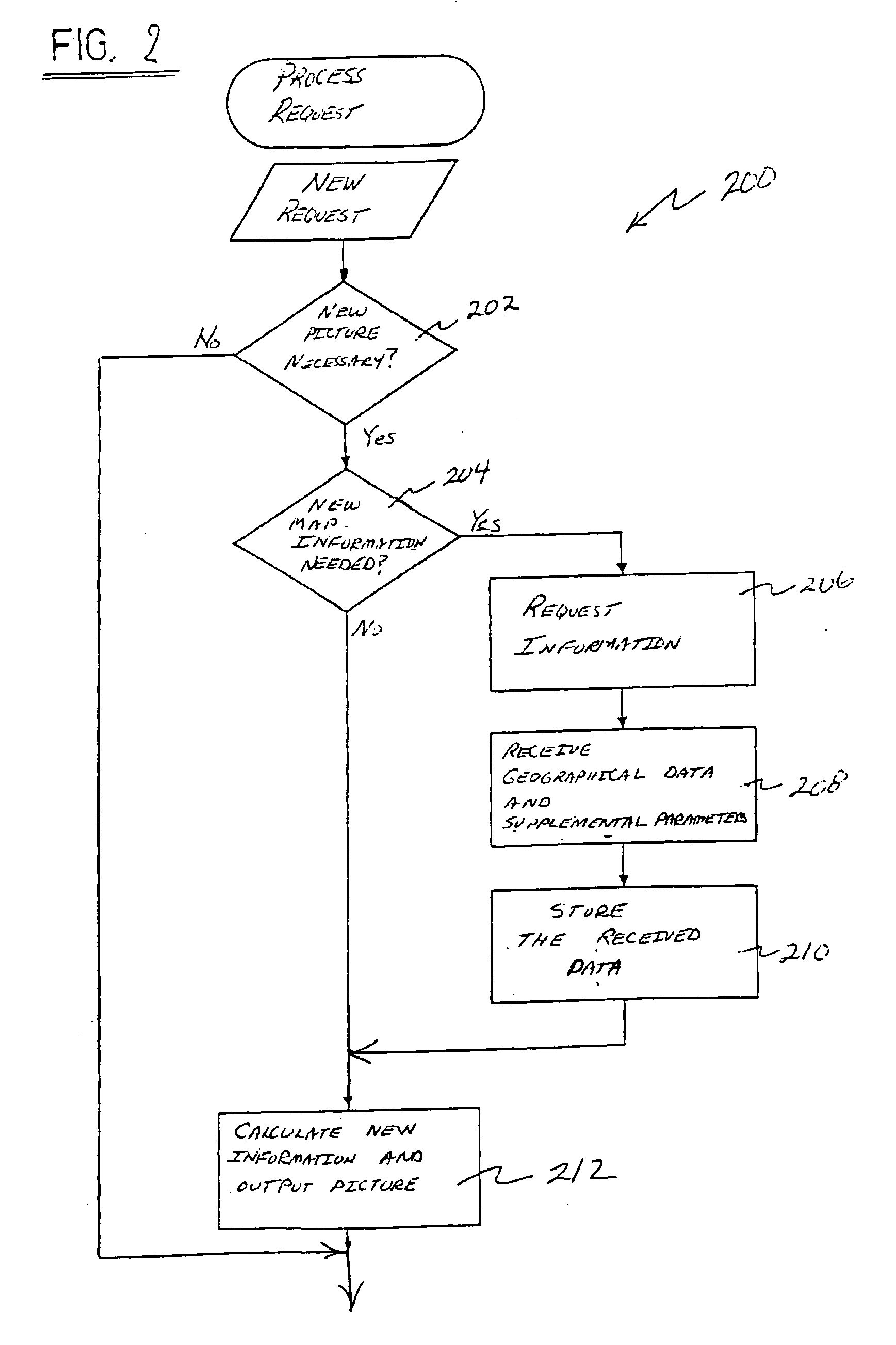Motor Vehicle Navigation System
a technology for motor vehicles and navigation systems, applied in traffic control systems, beacon systems, instruments, etc., can solve the problems of large data bus bandwidth, inability to ensure continuous and thus flowing display of geographical contents, and inability to transfer other information or data, etc., to facilitate expansion or replacement of individual components, reduce bandwidth, and save time
- Summary
- Abstract
- Description
- Claims
- Application Information
AI Technical Summary
Benefits of technology
Problems solved by technology
Method used
Image
Examples
Embodiment Construction
[0022]FIG. 1 is a block diagram illustration of a motor vehicle navigation system 100. The navigation system 100 includes a navigation computing unit 1, a data memory 2, a monitor unit 30, and various other components 7, each connected to a data bus 3 (e.g., an optical bus such as a MOST or MML bus). The navigation computer 1 is connected to a mass storage medium 50 (e.g., a CD drive) in order to retrieve road map information stored thereon. The navigation system 100 receives data signals from a speedometer 11, a direction sensor 12, a position sensor 13, and a tachometer 14. The monitor unit 30 includes an internal computer 31, a memory device 32, a display 36, and control elements 38.
[0023]The road map information in the navigation computer 1 is present as a geographical coordinate system (e.g., the WGS 84 coordinate system). The navigation computer 1 accesses such a geographical coordinate system for example through the above-mentioned mass storage unit 50. To generate a map to b...
PUM
 Login to View More
Login to View More Abstract
Description
Claims
Application Information
 Login to View More
Login to View More - R&D
- Intellectual Property
- Life Sciences
- Materials
- Tech Scout
- Unparalleled Data Quality
- Higher Quality Content
- 60% Fewer Hallucinations
Browse by: Latest US Patents, China's latest patents, Technical Efficacy Thesaurus, Application Domain, Technology Topic, Popular Technical Reports.
© 2025 PatSnap. All rights reserved.Legal|Privacy policy|Modern Slavery Act Transparency Statement|Sitemap|About US| Contact US: help@patsnap.com



